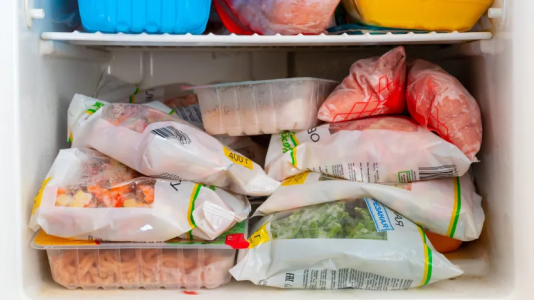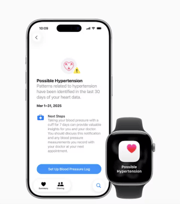Don't risk it! Expert tips to ensure your frozen food is still safe (no taste test required)
We've all experienced the benefits of freezing our weekly buys or leftovers, enjoying the convenience and money-saving advantages it provides to our lifestyle. Who wouldn’t love grabbing their favourite treat from the freezer and savouring it at their own leisure? However, even the most devoted frozen food enthusiasts must be cautious, as not all food ages gracefully in the freezer.
As members of the Seniors Discount Club, we know you appreciate useful advice, so we've come up with expert tips to help you determine whether your frozen goods remain appetising and, of course, safe (no taste test required!).
With time, the taste and quality of even consistently frozen food may decline. Generally, safe-to-consume frozen goods should last anywhere between one month and a year, depending on how they're stored. To save you from the disappointment of unappetising frozen fare, pay attention to its appearance, smell and texture.
In general, your freezer should have an internal temperature of 0°F or below and no higher than -10°F. Depending on the type of food, anything lower than -10°F can result in decreased quality and taste. Additionally, maintaining the proper humidity in the freezer is also key — if it is too dry, food can become brittle, while too much moisture can cause food to become clingy and icy. Make sure to check the manual of your particular freezer model to find out the ideal storage settings.
To get the best out of your food and prolong its shelf life, it’s important to store it properly in the freezer. Recognising the optimal storage conditions for different types of food can help you avoid freezer-burned meals and maintain a healthy, tasty frozen stockpile.
 In conclusion, Seniors Discount Club members, remember that your freezer is a fantastic tool to help you enjoy a diverse diet and save money. Still, it is vital to remain vigilant when it comes to the quality and safety of your frozen food. Don't hesitate to discard questionable items and keep our expert tips in mind when rummaging through your frosty kitchen companion!
In conclusion, Seniors Discount Club members, remember that your freezer is a fantastic tool to help you enjoy a diverse diet and save money. Still, it is vital to remain vigilant when it comes to the quality and safety of your frozen food. Don't hesitate to discard questionable items and keep our expert tips in mind when rummaging through your frosty kitchen companion!
As members of the Seniors Discount Club, we know you appreciate useful advice, so we've come up with expert tips to help you determine whether your frozen goods remain appetising and, of course, safe (no taste test required!).
With time, the taste and quality of even consistently frozen food may decline. Generally, safe-to-consume frozen goods should last anywhere between one month and a year, depending on how they're stored. To save you from the disappointment of unappetising frozen fare, pay attention to its appearance, smell and texture.
Assess the appearance
Your gut feeling is your best friend when it comes to evaluating the freshness of your frozen food. Bear in mind the following signs:- Meat: Red meats may lose their deep colour and acquire a grey or brown hue with time.
- Vegetables: Freezer-fatigued veggies might appear pale, losing their vibrant colours.
- Chicken: Although chicken doesn't often change colour, its bones may darken upon over-freezing.
- Fruits: Prolonged freezing may cause fruits to shrivel or darken.
- Fish: White or grey edges on your fish signify that it has remained frozen for too long.
Use the smell test
Your frozen goods smell can be equally revealing. An off scent or a plastic-like odour indicates freezer burn or staleness, while unusual odours may have been absorbed from previous freezer mishaps or other food items.Check for textural issues
Even if your frozen items appear and smell acceptable, their texture will serve as your final clue in determining their edibility.- Vegetables: Frost-afflicted veggies might feel slimy despite looking fine.
- Meat and chicken: Unpleasantly leathery textures signify a lapse in taste.
- Dairy: Frozen dairy can often become dry and grainy, and ice crystals on ice cream are a warning sign.
- Fish: Slimy fish suggests bacterial growth while light, dry fish have been over-frozen.
- Fruits: Over-frozen fruits may turn mushy upon thawing.
- Bread: Bread that crumbles after defrosting has likely spent too long in the freezer.
Optimal Storage Conditions for Different Types of Food
It’s not enough to just stick your food in the freezer and hope it’ll keep. Different types of food require different temperatures and levels of humidity in order to stay safe to eat and retain the best quality. For example, chicken, beef and other protein-based items require a temperature of 0°F for optimal storage. Fruits and vegetables fare better when frozen at a lower temperature (typically -4°F) as this preserves more of their nutritional value. Dairy products should also be stored at 0°F.In general, your freezer should have an internal temperature of 0°F or below and no higher than -10°F. Depending on the type of food, anything lower than -10°F can result in decreased quality and taste. Additionally, maintaining the proper humidity in the freezer is also key — if it is too dry, food can become brittle, while too much moisture can cause food to become clingy and icy. Make sure to check the manual of your particular freezer model to find out the ideal storage settings.
To get the best out of your food and prolong its shelf life, it’s important to store it properly in the freezer. Recognising the optimal storage conditions for different types of food can help you avoid freezer-burned meals and maintain a healthy, tasty frozen stockpile.
Key Takeaways
- Frozen food has an expiration date in terms of being appetising, even if it remains safe to eat indefinitely.
- To determine if frozen food has gone bad, check its appearance, smell, and texture for signs of spoilage or unappetizing qualities.
- Common signs of bad frozen food include colour changes, unpleasant smells, and undesirable textures.
- Properly stored frozen food can remain tasty for anywhere from one month to a year, but after that, it may lose its flavour and quality.








